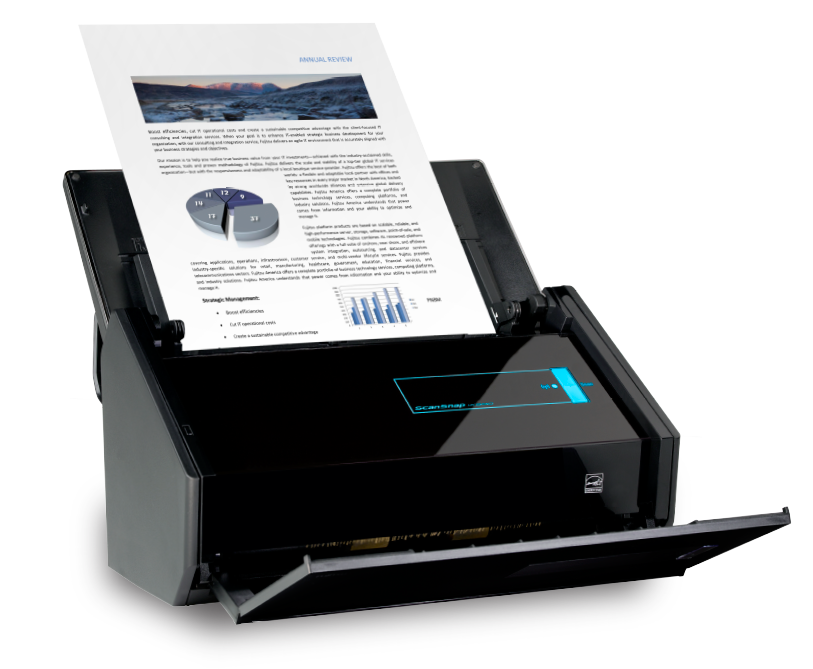Firm Management
Paradigm Shift – The Transfer of Scanning Responsibility
A simplification of scanning technology that enables CPAs to shift more of the responsibility of digitization closer to the documents’ source.
Nov. 02, 2016

The New Age of Accounting Services
As technology improvements support the market shift to SaaS models, the potential growth opportunity is changing the way small firms do business. Pressure to respond to a rapidly evolving digital business environment means that documentation and organization is more important than ever, for CPAs as well as their clients.
But improvements in technology have also allowed the process of document digitization to move closer to the source. They have enabled the scanner to transfer from the CPA’s desk to the clients’ themselves, permitting flexibility in the software used and hardware purchased. Increased ease-of-use and a wide range of integrations have pushed accounting services into the digital age, allowing the initial responsibility of scanning to shift from CPAs to their clients.
The new age of accounting services reflects our increasingly mobile lifestyles – the ability to access professional and personal data at any time, from anywhere and on any device. The key differentiator of modern Accounting firms will be the speed of reaction to increasingly digital business processes. Firms must be nimble and dynamic enough to respond quickly to clients’ evolving business environments. So shifting responsibility of the digitization process gives CPAs an advantage – instead of spending time chasing down documents and processing huge stacks of receipts, they can simply access online portals that enable document sharing, real-time collaboration and online communication.
Modern Scanning for the Modern CPA
To adapt to an increasingly digital returns submission process, CPAs need digitized receipts, invoices, bills, bank statements – any accounting documents that affect the client’s business. Perhaps your firm is considering, or already using, a Client Portal – if not, CPA Practice Advisor has a great article with more information on Portal usage. The rise of Cloud software applications has also driven rapid changes in SMB business process – again, CPA Practice Advisor lends insight here. Portals and cloud apps have become more than just a means to store and exchange documents, with features such as 24-hour access, live collaboration, assigned tasks and checklists. Though, there is still the issue of getting the data into the portal, and many forget to consider the document ‘on-ramp’ – the scanning process.
The good news is that scanning hardware has evolved in ease-of-use, mobility, reliability, and integrations. With the developments in hardware usability, modern scanning is not just the machine – it’s a solution. The growth in partnerships has made scanning part of organizations’ record management ecosystem, no longer a stand-alone activity.
Simple productivity features such as one-button scanning hardware allow CPAs to teach their clients how to use devices with a minimal learning curve, helping advisors to reduce the costs of document processing and billable hours. The ability to create searchable PDFs transforms the way CPAs manage, organize and store documents. The image processing capabilities of some SMB and personal scanners have even come so far that they don’t require the traditional drivers that normally increase the cost of scanning technology.
Advances such as the ability to scan straight to the Cloud (or other shared repositories) benefit all parties as CPAs can create customized workflows for their clients that automate organization, saving time and effort on both sides. Scanning software that, for example, lets clients send receipts to one folder and documents to another eliminates steps and improves process efficiency. CPAs can then work through the shared repository to find the records they need at the moment they need them, taking organization to a new level.
Looking Ahead
As our professional tools coalesce in digital platforms, the document digitization process becomes ever more important. The fact remains that the most critical element of a document is the data on it, so the faster and easier it is to digitize, extract and use the information, the more productive CPAs and their clients can be.
——————-
As part of the Business Development team at Fujitsu Computer Products of America, Inc., Allie Rumpanos uses her deep knowledge of scanning solutions, as well as customer insights, to drive ScanSnap’s partnership development in the Accounting and Legal industries. Attending many accounting shows throughout her tenure, she takes advantage of the opportunities to discuss industry trends, new technology options and the needs of accounting professionals. Her favorite part of the job is teaching small businesses and professionals how to use ScanSnap to streamline and optimize their processes, as well as identifying and nurturing partnerships with industry-specific line-of-business applications that enable everyday productivity.
